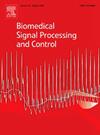Scalogram sets based motor imagery EEG classification using modified vision transformer: A comparative study on scalogram sets
IF 4.9
2区 医学
Q1 ENGINEERING, BIOMEDICAL
引用次数: 0
Abstract
Nowadays, motor imagery (MI) electroencephalogram (EEG) is mainly utilized for brain computer interface (BCI) based prosthetic device developments and involves the accurate classification of EEG signals. However, the major challenges are inter-subject and intra-subject variability, presence of noise and artifacts in the acquired EEG signal, this results in low average classification accuracy. To address these issues, the present work proposes an innovative algorithm based on scalogram set formation and modified vision transformer (MViT) model for classification of EEG data. The proposed scalogram sets formed by organizing scalograms of fundamental wavelets as well as their combinations and the proposed Modified Vision Transformer model employs both serial and parallel feeding of initial patches through consecutive transformer blocks, enhancing information flow and extracting diverse features. To verify and validate the proposed methodology, the BCI Competition IV 2b dataset was utilized. The MViT with Morlet and Shannon scalogram set performed accuracies of 86.34 % for intra-subject and 76.19 % for inter-subject classification. The proposed approach performed best among state-of-the-art methods with an average improvement of 3.46 % for intra-subject and 1.75 % for inter-subject in accuracy highlighting the robustness and reliability of the proposed methodology.
求助全文
约1分钟内获得全文
求助全文
来源期刊

Biomedical Signal Processing and Control
工程技术-工程:生物医学
CiteScore
9.80
自引率
13.70%
发文量
822
审稿时长
4 months
期刊介绍:
Biomedical Signal Processing and Control aims to provide a cross-disciplinary international forum for the interchange of information on research in the measurement and analysis of signals and images in clinical medicine and the biological sciences. Emphasis is placed on contributions dealing with the practical, applications-led research on the use of methods and devices in clinical diagnosis, patient monitoring and management.
Biomedical Signal Processing and Control reflects the main areas in which these methods are being used and developed at the interface of both engineering and clinical science. The scope of the journal is defined to include relevant review papers, technical notes, short communications and letters. Tutorial papers and special issues will also be published.
 求助内容:
求助内容: 应助结果提醒方式:
应助结果提醒方式:


